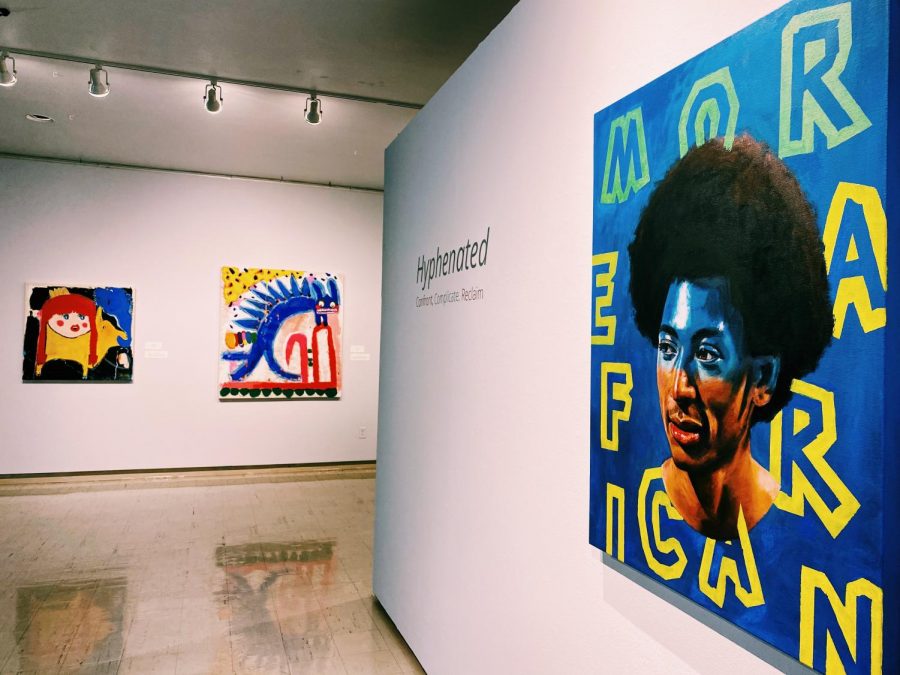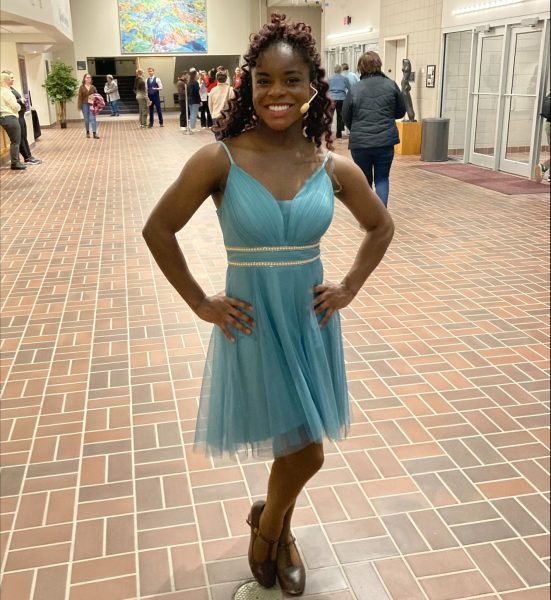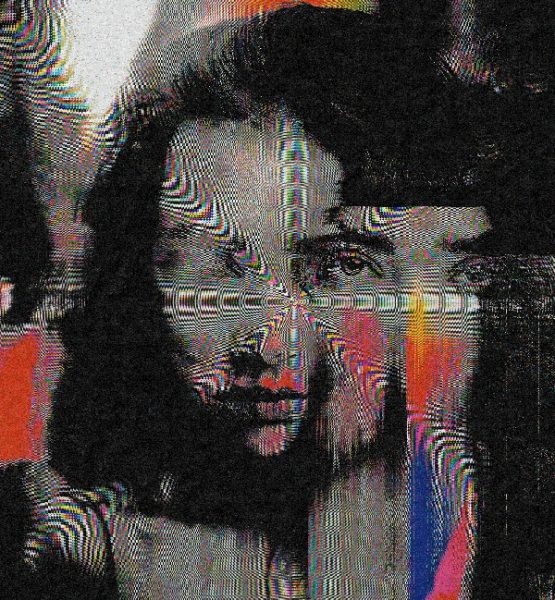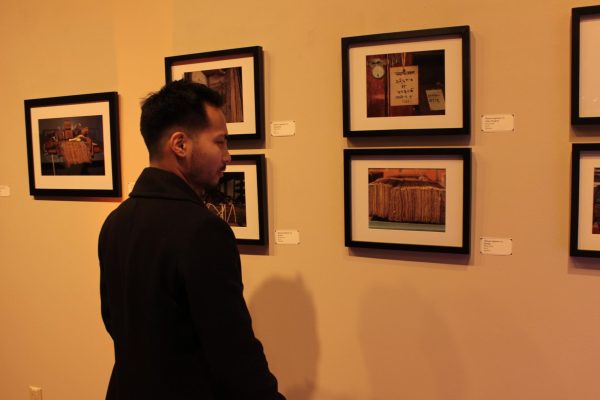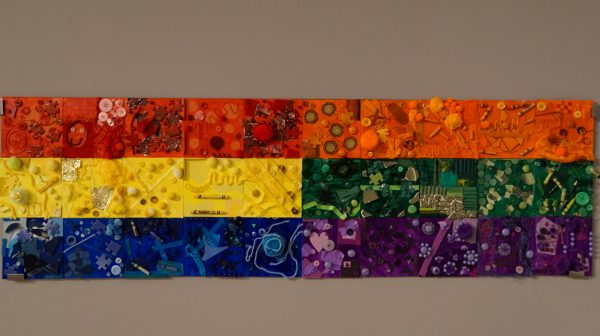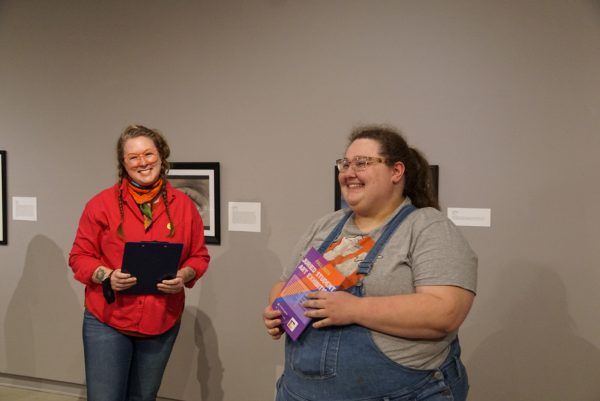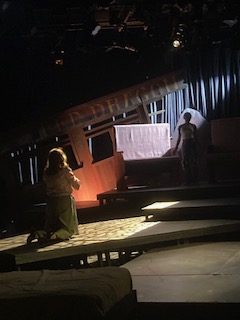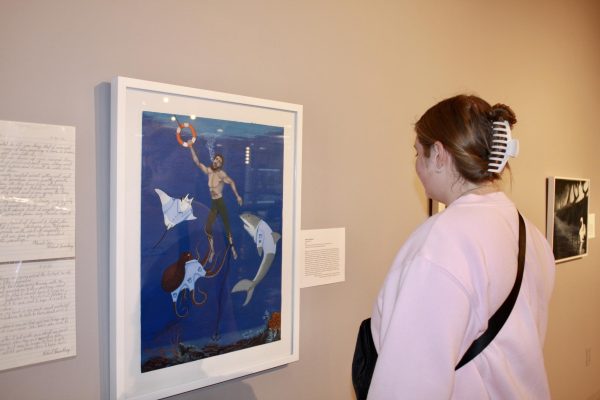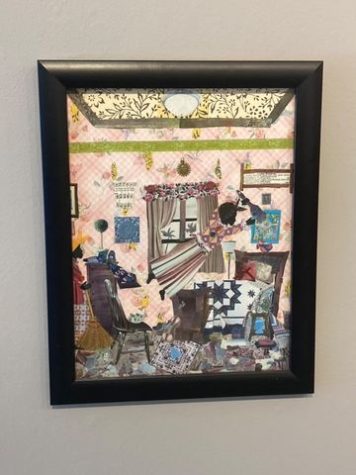Diversity on display in Crossman Gallery
Hyphenated Exhibit
“More Revolutionary,” an eye-catching piece, by William Paul Thomas is displayed at the front of the exhibit.
October 10, 2021
William Paul Thomas, Sanna Stabell and Ger Xiong are only a few of the incredibly talented artists whose work is currently on display at UW-Whitewater’s Crossman Gallery in the Greenhill Center of the Arts. The Hyphenated exhibit opened Monday, Sept. 20 and continues through Friday, Nov. 5. Featuring a vast array of mediums, there is much to see and feel while attending this gallery that will leave visitors contemplating how they see the Black, Indigenous, and all people of color through the hardship-filled reality they face as Americans.
While viewing the Hyphenated exhibit, it was hard to miss the multi-colored jumble of words and childlike creatures that lined the walls on large canvases. At first glance, capricious brushstrokes leave the pieces looking incomplete; however, when adequate time is dedicated to interpreting the story it shares, it’s consuming. One which especially stands out in the gallery is entitled, “Gris is the Word” by Sanna Stabell, which depicts a game of “tug of war” between two animals over an unknown blindfolded entity. The color on both sides contrast each other perfectly, showing the audience that the struggle is between an individual choosing a single identity.
“The center blind-folded figure represents the “hyphen” between two distinct ways of being…the more aggressive figure in the darker portion of the piece is attempting to pull the balance away from the lighter side, symbolizing the difficulty in maintaining harmony when caught between two worlds,” said Stabell.
Pieces throughout the entire gallery reflect similar themes of struggling identity and finding peace in oneself while simultaneously experiencing life in America as a member of the BIPOC community, truly reflecting the raw emotions of the artists that have experienced similar struggles to one another, irregardless of the fact that they come from different backgrounds. Tanya Crane’s internal conflict between her two cultural and racial backgrounds is also on display at the gallery; although, it’s not likely what one would expect. The piece presents the audience with a pair of double dutch jump ropes made out of synthetic blonde hair entitled, “Double Dutch.” The idea behind using blond hair within the braids is meant to free her from having to choose, instead representing that she is a blend of both cultures and unwilling to pick one or the other.
“Cultural imprints position me in a liminal existence between prejudice and privilege. I am half Black and half White… this desperate world forged my identity and development. I learned early that while each sphere had its own vernacular and expectations, it was a personal and conscious choice to decide which world to inhabit and when.”


